Vervain is a well-known medicinal plant that not only helps against indigestion, but also against sleep and anxiety disorders.
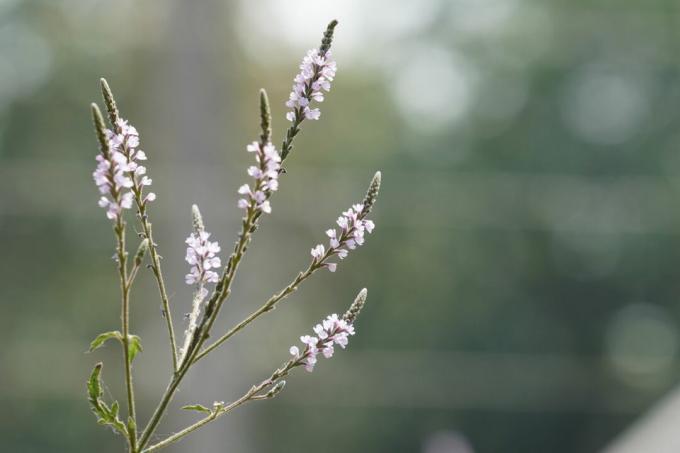
It is the vervain (Verbena officinalis) a very special medicinal plant that you can even easily grow in your own garden. Find out how best to do this here.
contents
- True vervain: origin and properties
- The best varieties
- Plant vervain: location and procedure
-
The right care
- Watering, fertilizing and Co.
- Cut vervain
- Is vervain hardy?
- Propagating vervain
- Harvest, Effect and Use
True vervain: origin and properties
The Vervain (Verbena officinalis) from the genus of vervain (verbena) is a medicinal plant that is widespread in southern and central Europe. However, the plant can also be found in other temperate or tropical regions. The perennial, herbaceous plant is also known as pigeon weed or real verbena.
It has an upright, quadrangular stem with lanceolate or three-lobed leaves that are opposite. Vervain grows to a height of between 30 and 80 cm. Verbena branches at the top and forms spike-shaped partial inflorescences with white or pink flowers. These appear from June to October. At this time, the plant can be harvested and used for medicinal purposes or, less commonly, in cooking.
If verbena is left standing, bees, bumblebees and butterflies can use the nectar and pollinate the medicinal herb so that the plant multiplies. After flowering, fruits are formed which, when ripe, break down into four nuts. The light brown, grooved seeds are then spread by wind or carried by humans or animals.
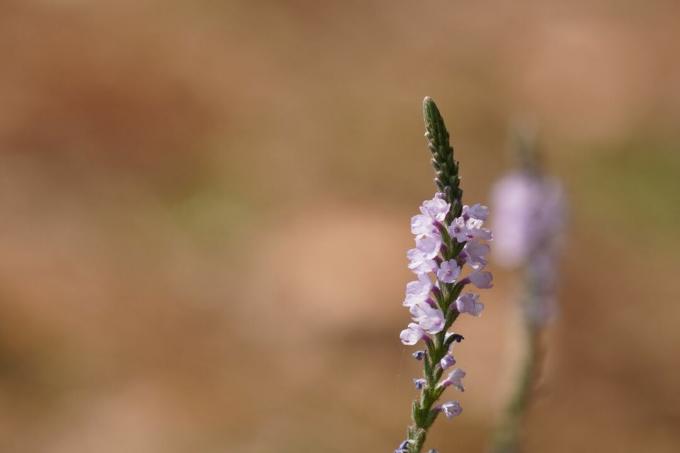
As a rule, vervain is perennial - but there are also specimens that are only annual. In any case, vervain is rather short-lived, i.e. it only stands for a few years, but is reliably maintained by self-sowing.
The best varieties
Only one variety of vervain is known. However, there are many other verbena species and varieties that are not used as medicinal herbs, but look just as beautiful in the garden as vervain. Here we present an example:
Purple-leaved Verbena (Verbena officinalis var. grandiflora ‘Bampton’): Variety with purple foliage leaves and small pink flowers. This verbena is not hardy and only tolerates temperatures down to around -10 °C, which is why it must be protected from frost.

Plant vervain: location and procedure
If you want to keep verbena in the garden, you should prepare the soil well before planting. If the verbena is in the right place, you don't have to invest a lot of time in caring for it. Bright and sunny locations are best suited, because this is where large, vigorous plants form. But vervain also thrives well in semi-shade. In the best case scenario, the subsoil should be permeable, rather dry and poor in nutrients for the vervain. Sand can be incorporated to make heavy soil more permeable.
The seeds can be sown directly outdoors from the end of April, or grown on the windowsill from February. They should be grown on a nutrient-poor substrate such as ours Plantura Organic Herb & Seed Soil be released so that they develop well. Our soil is specially composed for plant cultivation and contains no peat. The seeds are covered only lightly or not at all with soil, as they are light germinator acts.
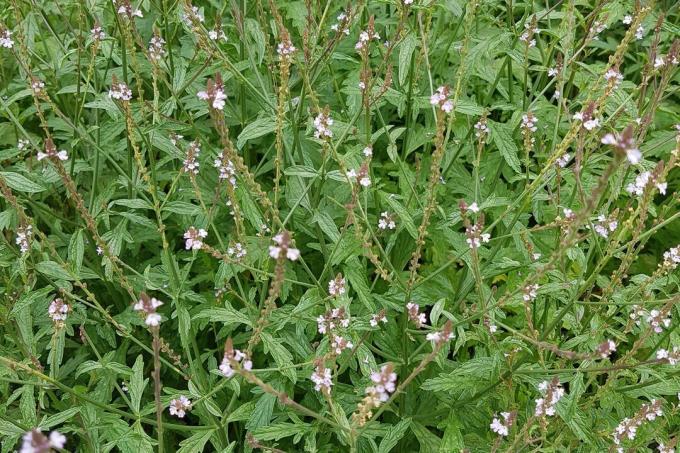
Proceed as follows when sowing:
- Directly outdoors from May or on the windowsill from February
- Fill pots with soil or loosen beds slightly
- distribute seeds
- Do not cover seeds or only lightly cover them with soil
- Pour carefully
- Ideal temperature at 20 °C
- Germination time under good conditions 2 - 3 weeks
Before you plant the verbena seedlings, the soil should be treated with a little slow-release fertilizer, such as our Plantura organic flower fertilizer, be fertilized. The nutrients ensure a good start to growth, and our fertilizer is safe for pets and garden animals. The fertilizer then stays in the bed for the entire season, since the verbena does not need a lot of nutrients. From May, the seedlings can then be pricked out and planted out 30 cm apart. This corresponds to about eight plants per square meter.
A pot culture is also possible. In order for the vervain to grow well in the pot, a deep container should be chosen, because the roots can reach up to 70 cm deep into the ground. Lay a drainage layer, for example made of pebbles, at the bottom of the pot so that the verbena does not suffer from waterlogging. You can then place the pricked out seedlings in a more nutritious substrate, such as ours Plantura organic potting soil, plant. Our peat-free soil provides the verbena with important nutrients so that it does not have to be fertilized in the first few months. The loose, permeable structure is retained for a long time and can be improved by adding sand for the verbena.
The right care
Even if the vervain is one of the easy-care garden plants, you can ensure that the plant always grows well and stays healthy with appropriate care measures. In general, verbena needs more care when planted in pots.
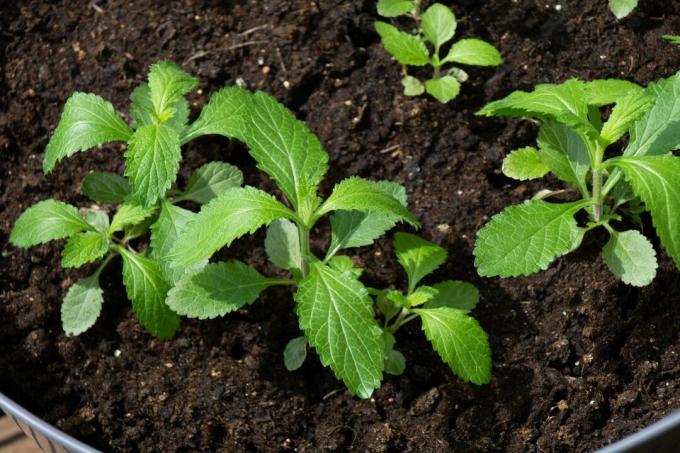
Watering, fertilizing and Co.
Vervain copes well with drought, but waterlogging is not tolerated at all. The bed only has to be watered when it is hot and dry for a long time so that the soil does not dry out completely. In the pot you have to water the vervain more often, because the soil dries out much faster there than outdoors. With the finger test you can test whether the substrate is still damp in the upper third or whether it needs to be watered again.
It's the same with fertilization. If the soil was repaired with long-term fertilizer before planting, it does not have to be fertilized again until next spring. Especially with verbena in a pot, which has less soil volume available, a slow-release fertilizer should be worked in at the beginning of the vegetation period, which then lasts for the whole season. In order to get a plant with plenty of good ingredients, it is better to hold back on additional fertilizers.
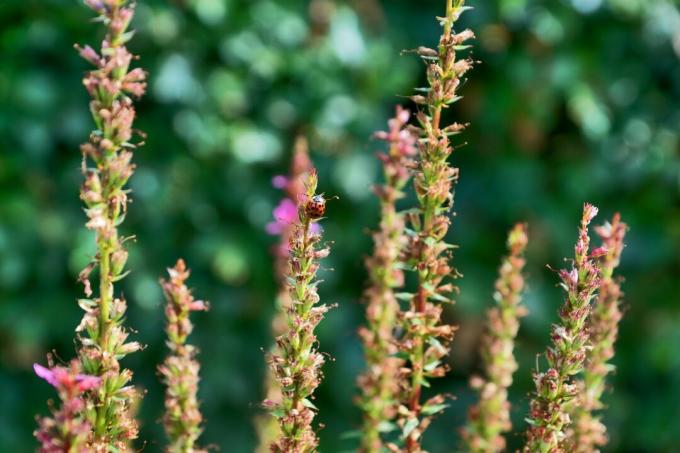
Cut vervain
There are various reasons for cutting verbena. By cutting back faded inflorescences you can extend the flowering period a little. It is also a good idea to cut back the verbena before winter, as the above-ground Plant parts usually die off and the energy is put into the roots by pruning can be. Varieties that are sensitive to frost should only be cut back in the spring, as this gives them better protection in winter. Otherwise, you only have to cut the verbena if you want to use it for healing purposes. In this case, leaves and flowers or the whole plant are cut off during the flowering period and then dried.
Is vervain hardy?
As a rule, vervain is hardy here and can even withstand temperatures of up to
– 30°C. The above-ground parts of the plant die off in winter, but the plant sprout again in spring. A pruning before winter means that the energy is put into the roots rather than into the above-ground parts of the plant that are dying anyway. However, there are also verbena plants that are only annual and die off completely in winter.
Verbena in the pot must be protected from the low temperatures, because the soil freezes much faster here than outdoors. To do this, wrap the planter in fleece and place it on a block of wood. A layer of mulch should be applied to the soil.
Propagating vervain
The seeds of the plant are used to propagate vervain. You can harvest this from the plants yourself after the flowering period or buy it in specialist shops. Verbena will also seed by itself - provided you leave the inflorescences and do not cut the plants. Verbena seeds are then sown as described above and later transplanted. If you let the verbena reproduce itself, you usually don't have to do anything.
In addition, vervain can be propagated by cuttings. This propagation method is particularly suitable for obtaining pure varieties. To do this, cut off about 10 cm long shoots with sharp scissors in summer or autumn and remove the lower leaves. The shoots are then placed in moist potting soil and placed warm and bright in the house. If roots form over the winter, the cuttings should be repotted in potting soil and cultivated indoors until the end of April. From May they can then be planted outside in the bed.
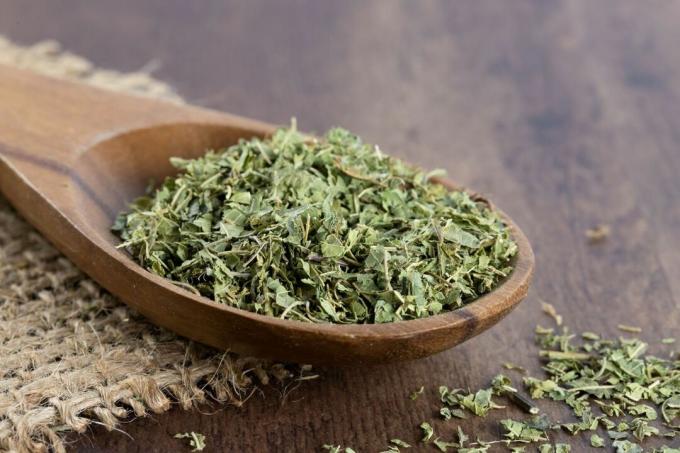
Harvest, Effect and Use
If you want to use verbena as a medicinal plant, you should cut the plant when it blooms. The morning hours are best, when the flowers are not yet open or only partially open. The verbena is then cut off at an angle just above the ground. The plants, tied into bundles, are then hung up with the flowers down on a string and left to dry in a dark and warm room.
The dried parts of the plant, usually the leaves, can be stored in a glass and made into a tea if required. Real verbena tea helps against stress, gastrointestinal complaints or even against anxiety and sleep disorders. Verbena also has an antispasmodic and antipyretic effect. During pregnancy, it is better to avoid taking the medicinal herb, as the ingredients can induce labor.
Has verbena sparked your interest in medicinal herbs? For more inspiration, check out our feature article, where we list the 10 best Medicinal plants from the garden introduce.



